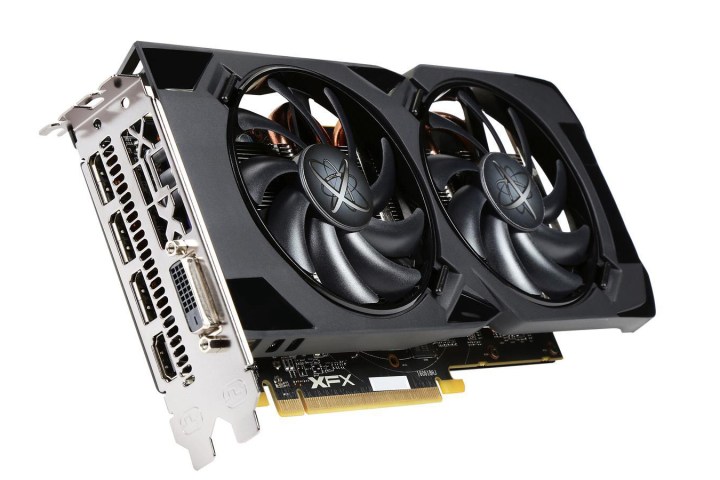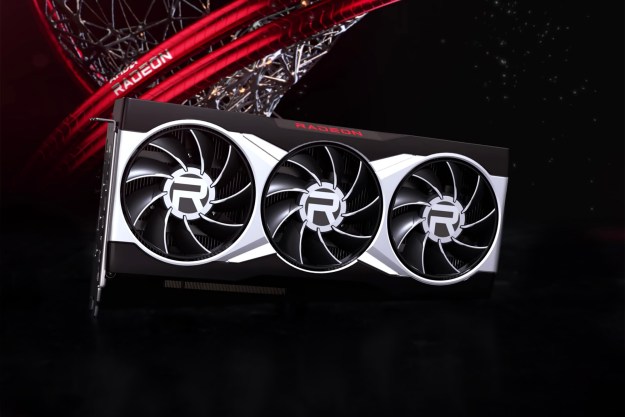
While some of those differences are architectural, most of the pure performance gains come from faster clock speeds. At the same time, because the GPUs are similar enough, some intrepid hardware hackers decided to try to turn their Radeon RX 470 and RX 480 cards into a reasonable facsimile of their successors. For the most part, they succeeded, as Guru3D reports.
First, a refresher on the relative specifications of AMD’s reference cards, starting with the RX-580:
| RX 580 | RX 480 | |
| Graphics core: | Polaris 20 XTX | Polaris 10 XT |
| Compute units: | 36 | 36 |
| Stream processors: | 2,304 | 2,304 |
| Base speed: | 1,257MHz | 1,120MHz |
| Boost speed: | 1,340MHz | 1,266MHz |
| Memory: | 4GB/8GB GDDR5 | 4GB/8GB GDDR5 |
| Memory interface: | 256-bit | 256-bit |
| Memory bandwidth: | 256GB/s | 256GB/s |
| Memory speed: | 8GHz | 8GHz |
| Peak performance: | Up to 6.17 TFLOPS | Up to 5.83 TFLOPS |
| Maximum power: | 180 watts | 150 watts |
| Power connector: | 1x 8-pin | 1x 6-pin |
| Target market: | Beyond smooth HD gaming | Premium VR Experiences |
| Starting price: | $199/$229 | $199/$229 |
| Availability: | April 18 | June 2016 |
Here’s the RX 570:
| RX 570 | RX 470 | |
| Graphics core: | Polaris 20 Pro | Polaris 10 Pro |
| Compute units: | 32 | 32 |
| Stream processors: | 2,048 | 2,048 |
| Base speed: | 1,168MHz | 926MHz |
| Boost speed: | 1.244MHz | 1,206MHz |
| Memory: | 4GB/8GB GDDR5 | 4GB/8GB GDDR5 |
| Memory interface: | 256-bit | 256-bit |
| Memory bandwidth: | 224GB/s | 224GB/s |
| Memory speed: | 7GHz | 7GHz |
| Peak performance: | Up to 5.10 TFLOPS | Up to 4.94 TFLOPS |
| Maximum power: | 150 watts | 110 watts |
| Power connector: | 1x 6-pin | 1x 6-pin |
| Target market: | Max 1080P Gaming | High visuals |
| Starting price: | $169/TBA | $149/$179 |
| Availability: | April 18 | June 2016 |
While AMD itself utilized different board design with an 8-pin power connector compared to the previous generation’s 6-pin connectors, Guru3D points out that most original equipment manufacturers are building their 500 series cards with the same PCB designs that were used in their 400 series cards. The Device ID didn’t change between the two generations, making it possible to flash the firmware version from the older cards onto the newer cards.
Guru3D forum member BigMamaInHouse did just that on his Radeon RX 470. When flashed with the RX 570 firmware, the card performed as if it were the newer model. Apparently, the older cards run at the base same clock rates as the newer cards, and that results in similar performance improvements. Consider Guru3D’s testing results with their Radeon RX 570, which achieved a graphics score of 3,991 on the 3DMark Time Spy, and the very similar 3,902 scored by BigMaMainHouse’s flashed RX 470.
According to Hexus.net, users have achieved similar results by flashing their Radeon RX 480 cards using the RX 580 firmware. While it doesn’t seem possible to overclock the resulting hybrid devices, and stability was noted as an issue for some users, the fact remains that some lucky RX 470 and RX 480 owners can gain significant performance improvements with a simple firmware update.
If you decide to do the same with your own graphics card, then of course the usual caveats apply. You might break something or blow something up, so be careful. Also, make sure to read through the various forum discussions to discover some of the tips and tricks other users have discovered that will give you the best chance at success. If this kind of thing isn’t your cup of tea, then you could always sell your existing card on eBay and pick up a new one.
Editors' Recommendations
- Here’s how you can get The Last of Us for free from AMD
- What power supply do you need for the AMD Radeon RX 7900 XTX?
- Next-gen AMD and Nvidia GPUs just moved one step closer to launch
- Nvidia’s GPUs could smash AMD in the next-gen performance war
- AMD’s next-gen GPUs may deliver 130% performance jump





